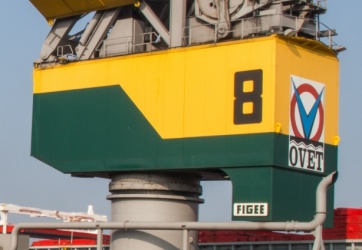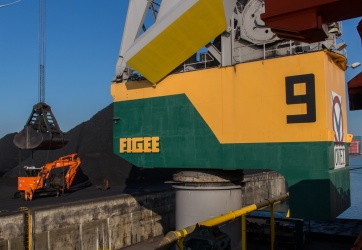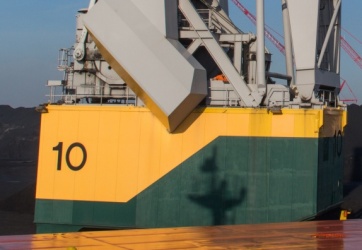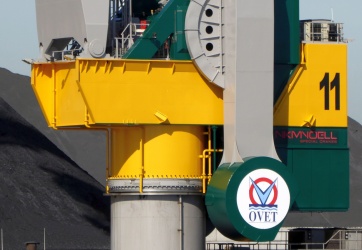
Four floating cranes
The floating cranes form the beating heart of Ovet’s business operations. From their very early beginnings in 1957, it was obvious that Ovet would be opting for floating cranes. The great advantage of floating cranes is their immense flexibility. They can move loads to virtually any location. Ovet purchased its first floating crane in 1957, which had a lifting capacity of 6 tonnes. At that time, this capacity was amply sufficient for transferring product loads from the Coke factory. Shortly afterwards, the demand for greater capacity was making itself felt and Ovet acquired a second floating crane of the same type. The company then purchased a third floating crane some time later. This would be the last floating crane of this generation.
The second generation of floating cranes was introduced in the 1970s. Ovet purchased two 16 tonne floating cranes of the Lemniscaat type. Given the special way in which these floating cranes were constructed, the cable end remained virtually at the same height during the top movement. Height compensation for top movements therefore became superfluous, and the floating cranes thus became more energy-efficient. Compared to their predecessors, both the technology and the drivers’ cabins of this type of floating crane were now considerably more sophisticated. Floating cranes were being designed in such a way that the crane driver gained an extensive overview of the site. In 1980, the sixth floating crane came along, and this also had a 16 tonne lifting capacity. The first generation of floating cranes was then sold, and thus entered into the annals of history.
In 1981, the first 25 tonne floating crane made its appearance, and signalled the arrival of the third generation. This included the special independent cab arm feature for enhanced control and user-friendliness. In addition, the crane offered greater stability and state-of-the-art technology. Over the years, Ovet has operated four third generation floating cranes, and only three of these are still in service. The fourth generation has now come along in the form of floating crane 11. In order to be able to keep up with new developments in terms of vessel size and to increase productivity, Ovet decided to replace its floating crane 7 (25 tonnes) with a new 36 tonne floating crane. In the design of this floating crane, particular attention has been paid to the pontoon and the hauling winches. For example, all the equipment is now stored on deck, and the hauling winches, which are equipped with a central lubrication system, are conveniently positioned to the front of the pontoon. The fender chains are connected to the pontoon by a track system mounted on the side. Finally, the company has also opted for a central air conditioning system for the cab, which includes temperature control.
The new 36 tonne floating crane is state-of-the-art and offers greater stability and improved efficiency. The crane cab is equipped with a glass-bottomed floor instead of a viewing port, and the crane is also fitted with a lift. Members from the whole organisation have taken part in study groups in order to work on the whole project of this new floating crane. They have made a great contribution to the design of the floating crane and the pontoon. As a result, the entire organisation has been involved in the design of this floating crane, and everyone is therefore immensely proud of it.




